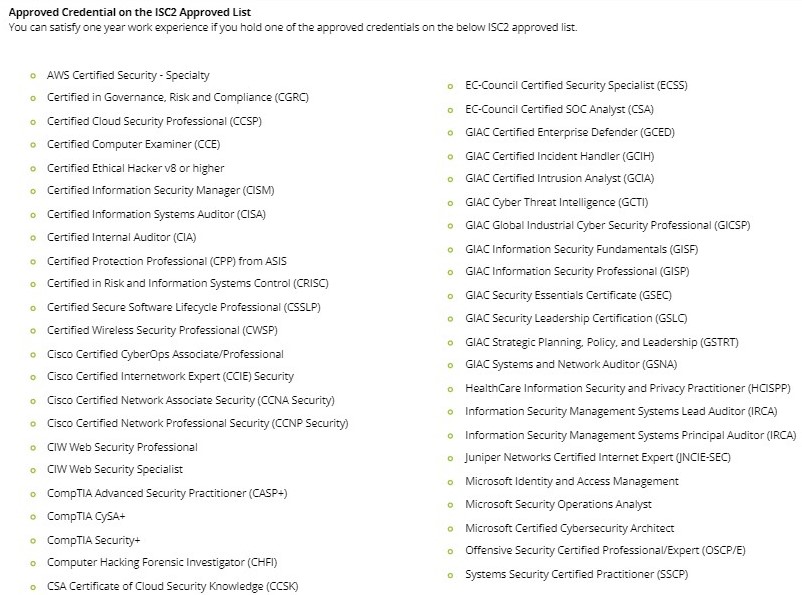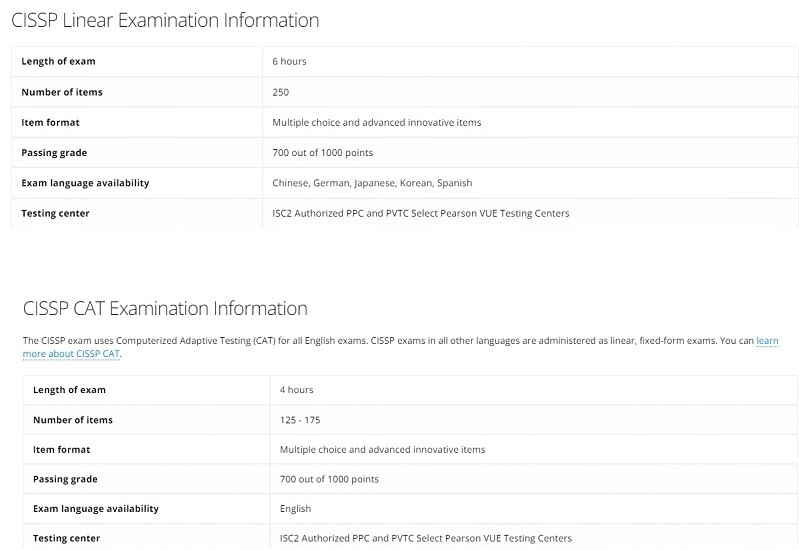Table of Contents
ToggleThe Certified Information Systems Security Professional (CISSP) Certification is ideal for maintaining data security and cybersecurity requirements. Complex cyber threats are continuously damaging the business landscape globally, and organizations are facing vulnerabilities from hackers and scamsters regularly. In this regard, CISSP knowledge from a global governing body like ISC2 is heading in the right direction.
Gaining knowledge of CISSP concepts is one thing, but, passing the CISSP Certification may not be everyone’s cup of tea because there are various steps that you need to remember preparing for this. This article highlights every aspect of CISSP about whether as an individual or as an enterprise team you are ready to take on the challenges faced in today’s vulnerable business landscape.
CISSP Certification: Are you Eligible?
In contrast to a typical IT graduate, a Certified Information Systems Security Professional (CISSP) accredited by ISC2 possesses enhanced and comprehensive expertise in addressing the spectrum of information security threats encountered by organizations. As a CISSP, one is proficient in formulating protocols and directives to safeguard businesses against security breaches.

Among the specific responsibilities undertaken by a CISSP are establishing disaster recovery strategies, designing resilient IT networks, and implementing robust security management protocols. Additionally, CISSPs are adept at crafting cryptographic frameworks and architecting network infrastructures resilient to both cyber and local threats.
Eligibility Requirement
- Eligibility for the CISSP exam requires a minimum of five years of professional work experience.
- Full-time employment necessitates a commitment of at least 35 hours per week for four consecutive weeks within a given month.
- Candidates holding a four-year college degree or its equivalent, an advanced degree in information security accredited by NCAE-C, or another recognized credential listed on ISC2’s approved roster may qualify for a one-year exemption from the work experience requirement.
Experience waivers are accessible to individuals possessing college degrees and supplementary credentials, subject to approval by the (ISC). Furthermore, one can attain the status of Associate of the (ISC) and obtain CISSP certification upon fulfillment of the requisite experience criteria.
According to ISC, let’s see what are the full-time and part-time work experiences that a candidate must have to be eligible for the CISSP exam.
Work Experience
1. Full-Time Experience: Your work experience is accrued monthly. Thus, you must have worked a minimum of 35 hours/week for four weeks to accrue one month of work experience.
2. Part-Time Experience: Your part-time experience cannot be less than 20 hours a week and no more than 34 hours a week.
- 1040 hours of part-time = 6 months of full-time experience
- 2080 hours of part-time = 12 months of full-time experience
3. Internship: A paid or unpaid internship is acceptable. You will need documentation on company/organization letterhead confirming your position as an intern. If you are interning at a school, the document can be on the registrar’s stationery.
Relevant Education/Certifications
You may satisfy one year of required experience by holding one of the below (you will then need four years of relevant work experience):
- Four-Year College Degree or Regional Equivalent
You can substitute a maximum of one year of work experience if you hold one of the following:
- A four-year college degree or regional equivalent
- An advanced degree in information security from the U.S. National Center of Academic Excellence in Information Assurance Education (CAE/IAE).

Image source: www.isc2.org
CISSP Syllabus and Exam Format
- Domain 1: Security and Risk Management-15%
- Domain 2: Asset Security-10%
- Domain 3: Security and Architecture Engineering-13%
- Domain 4: Communication and Network Security-13%
- Domain 5: Identity and Access Management (IAM)-13%
- Domain 6: Security Assessment and Testing- 12%
- Domain 7: Security Operations-13%
- Domain 8: Software Development Security-11%
The CISSP examination assesses proficiency across eight domains of security within a four-hour duration, encompassing 125 to 175 mandatory responses. These responses consist of a combination of multiple-choice questions and advanced innovative items. Attaining a score of 700 out of 1,000 is necessary for successful completion. Prospective candidates can register for the exam through Pearson VUE.
There are mainly two formats of the CISSP exam, CISSP Linear Examination and CISSP CAT Examination.

According to ISC2, “Effective February 12, 2024, the CISSP exam will be available in the Chinese language in the Computerized Adaptive Testing (CAT) format. Effective April 15, 2024, the CISSP exam will be based on a refreshed exam outline. Effective April 15, 2024, the CISSP exam will only be available via CAT in the following languages: English, Chinese, German, Japanese, and Spanish. There will be no CISSP linear exams effective April 15, 2024”
How to Pass CISSP Certification on the First Attempt?
To successfully pass the CISSP certification exam on your first attempt, it’s imperative to adhere to a disciplined and strategic approach.
- CISSP exam outline: Begin by thoroughly comprehending the eight domains outlined in the CISSP Common Body of Knowledge (CBK), ensuring a robust understanding of each concept. Craft a meticulous study plan encompassing all exam topics, utilizing official study materials and reputable resources to bolster your knowledge base.
- Daily practice: Regularly engage in practice exams to assess your preparedness levels and pinpoint areas requiring further focus. Hands-on experience in information security through real-world projects or lab simulations is invaluable, enhancing your practical understanding of key concepts.
- Accredited Organizations: Consider enrolling in CISSP training courses provided by trusted organizations, offering structured learning and insights from seasoned professionals. Participation in study groups fosters collaboration and enables peer-to-peer learning, reinforcing understanding and addressing queries effectively.
- Self-assessment: Continuously review and revise the material to solidify your comprehension, concentrating on areas of weakness identified through self-assessment. Approach the exam with confidence and composure, applying relaxation techniques to manage any anxiety.
- Time management: During the exam, meticulously analyze each question, ensuring a clear understanding before selecting your answer. Effective time management is crucial, allowing adequate time for each section while maintaining focus and composure.

CISSP is one of the most sought-after IT/Cybersecurity certifications out there in the market; getting certified as an individual or as a team for your organization demonstrates your commitment to your customers globally and that you are serious about handling security incidents to the best of your knowledge and capabilities. CISSP is your shining armour that protects your customers and improves your security posture significantly in today’s ever-evolving security threats globally. You can contact us at [email protected] to get customized dates and discounts for group training programs.
